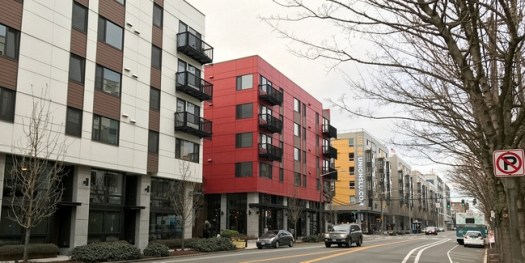
The Puget Sound region’s extreme growth hasn’t gone over well with some residents. (To put it mildly.) That backlash has caused some frustrating policy snags, like the lawsuit that has placed Seattle’s MHA upzones on hold.
But construction in Seattle continued on plenty of multifamily projects. That hasn’t always been the case in the rest of King County. In recent years, several suburban cities, including Issaquah, Sammamish, and Federal Way, halted construction on new projects by enacting construction moratoria.
Under the Growth Management Act, a city can pause work on any or all kinds of new projects by enacting a construction moratorium. The power is broad, but not unlimited. A city has to cite specific detrimental impacts caused by new construction, and use the period of the moratorium to enact code changes that address the problem. A moratorium only lasts six months at a time, but can be renewed indefinitely. Issaquah, for example, renewed its moratorium three times before letting it expire earlier this year.
You might think that those laws are the product of NIMBYism. In some cases, that’s true. But the reality is more complicated.
Continue reading “Suburban construction freezes can kill density—or create it”




